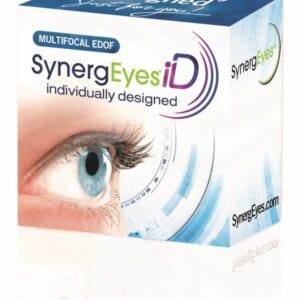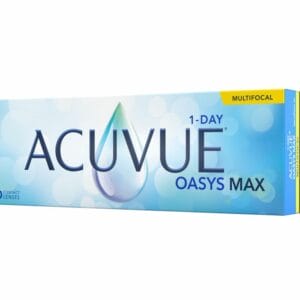April 11, 2023
The contact lens evaluation is a greatly overlooked part of the success of our contact lens patients, especially with our presbyopic patients. Whether they have been wearing contacts for decades or want to become first-time contact lens wearers, many different factors are at play than with a younger patient population.
The first part of the evaluation is to obtain an up-to-date refraction to maximize contact lens fitting success and efficiency. Without a current prescription, you do not know what contact lens options are available. We all have been bitten by talking about new lens technology only to find out the parameters our patient needs are not available. The goal is for the patient to be a successful presbyopic contact lens wearer, and managing expectations is necessary in achieving that success. What we say throughout the entire evaluation matters.
What’s Their Plan for Contact Lens Wear?
The next step is to find out from the patient what they want to achieve with their contact lens wear. Most presbyopic patients are unaware of the contact lens options available to them. In the workup for first time contact lens wearers in our practice, the technicians are trained to ask the following questions so the doctor has an idea before even walking in the room:
- How often would you like to wear your contacts?
- If part time: For what occasions? Work? Sports/Exercise? Social events?
- If full time: What is your occupation? What is your work setup? How far away from you are your screens?
For the existing wearer, educate them about the different optical options: multifocal contact lenses, monovision, and distance vision with readers over. It is shocking how many patients do not know that multifocal contact lenses exist. Walk those patients through the design of multifocal contact lenses and their optics, highlighting how they are different from progressive spectacle lenses. Take the time to educate patients about why we are choosing a specific lens for that patient, listing features, benefits, and design to suit their lifestyle needs.
Approximately one in five contact lens wearers think all contact lenses are essentially the same. Patients assume that the optics are the same and have some trepidation due to stories told by friends and family members of failures in progressives.
It Takes Time to Settle So Don’t Judge Vision Too Quickly
After coming up with a plan based on the patient’s goals, assess the anterior segment with the slit lamp before putting a lens on the eye. Once the lens is on, give it ample time to settle, and let the patient know not to judge the vision too quickly. Patients want to immediately reach for their phone, but urge them not to until the lenses have an appropriate amount of time to settle. In our practice we let them settle for at least five minutes before we check visual acuities.
Because all of the contact lens options for presbyopic patients are designed to be binocular solutions, checking binocular acuities first is another key to success. By checking monocular acuities first, there may be a delay in the adaptation to these options that can negatively affect a patient’s perceptions. While most of our day is spent in an exam room as optometrists, our patients live their lives outside of one. Let the patient experience their vision in real world viewing conditions to demonstrate how well they can see.
After optimizing the prescription, look at the lenses on the eye behind the slit lamp. Decentration or too much movement could mean less than adequate visual acuity at distance or near. Consider trying a different brand if either of these conditions occur.
Managing Contact Lens Wear ‘IRL’ (In Real Life)
Whenever shifting from single vision to presbyopic contact lenses, bring the patient back for a contact lens follow up in one to two weeks. The patient will be able to share what they liked about the new contact lenses and any areas that they feel can be improved in their “real lives” as compared to our optimal exam rooms. Patients are more at ease when they know their doctor is willing to put in the time to ensure a successful contact lens experience.
All of this time we are spending with the patient comes at a time cost. We recommend charging fees that are reflective of the time and care you and the staff are putting into the evaluation process. The expertise provided in the fitting and evaluating of the lenses along with patient education are part of the fee. In our practice, we have a sheet that documents the steps of the evaluation process if a patient is hesitant of the fees. Our goal is to truly show the value of how much effort goes into this process. We want the patient to understand how intentional we are as practitioners in this evaluation.
Fitting and evaluating a patient in multifocal contact lenses truly is an art. Because each patient is unique in their goals, refractive error, and expectations, the process of providing the patient glasses-free vision is fun and rewarding! However, despite the uniqueness of each patient, the technology and variety of contact lens options we have at our disposal allows us to find a solution for nearly every presbyopic patient.





